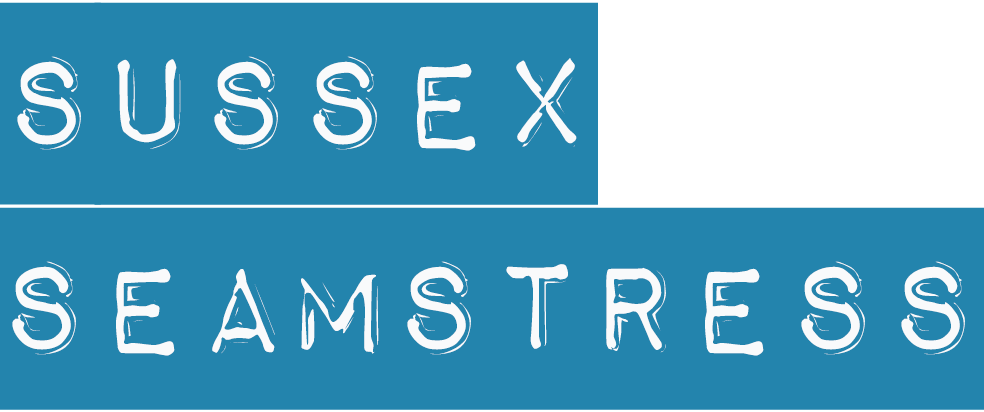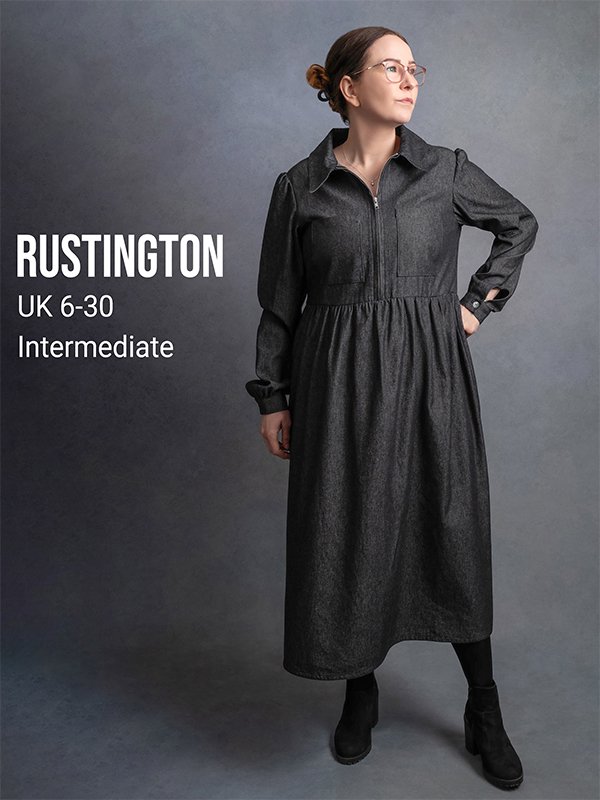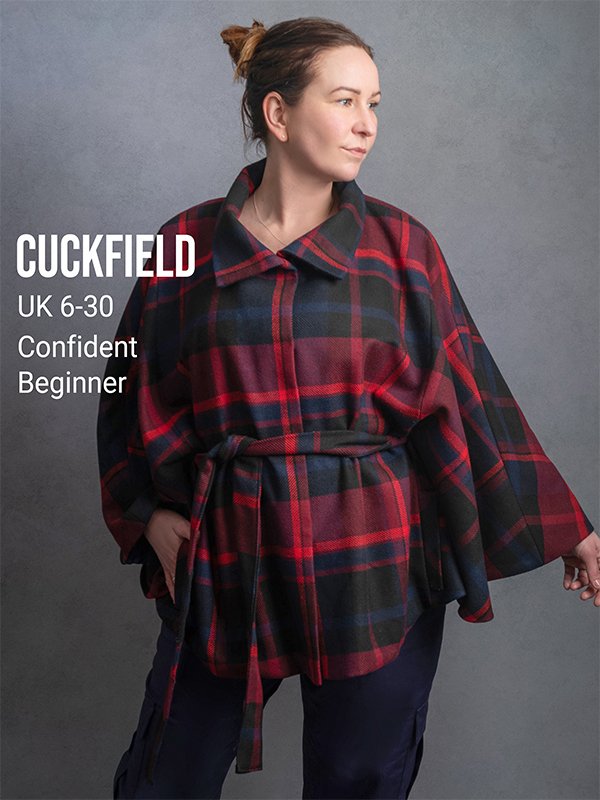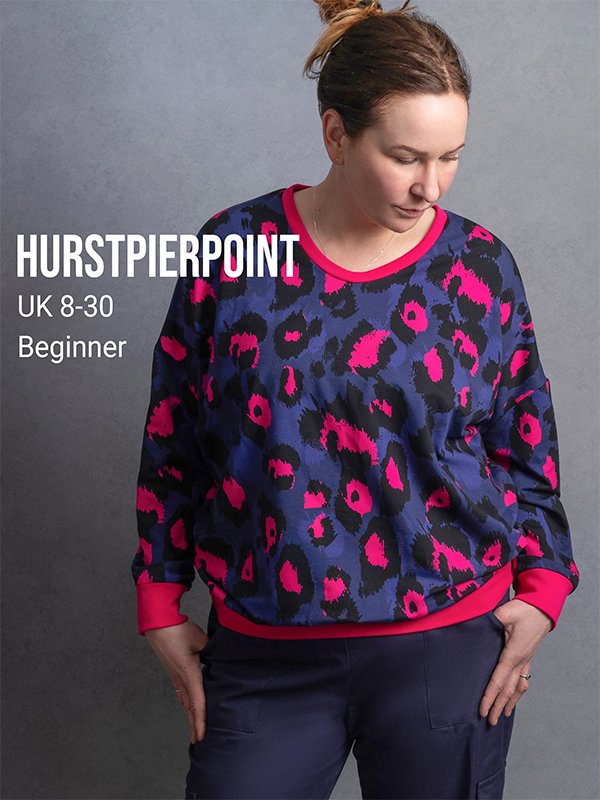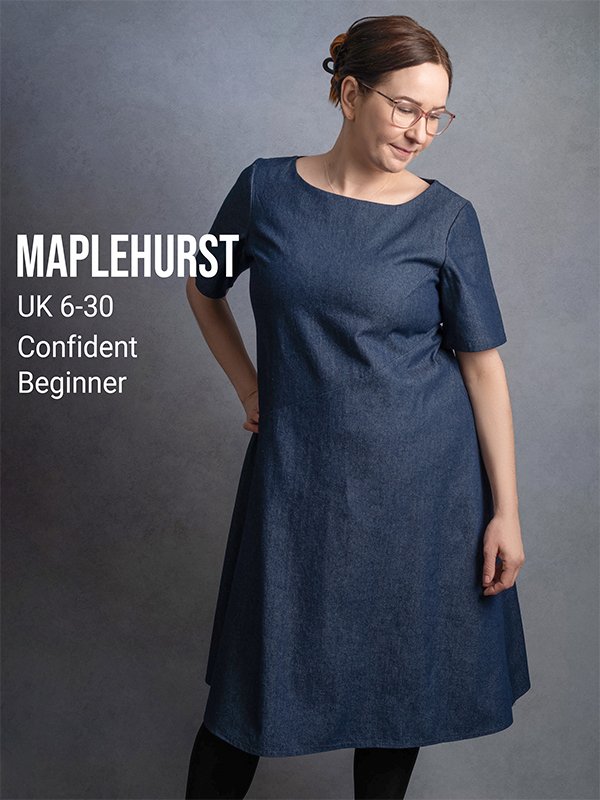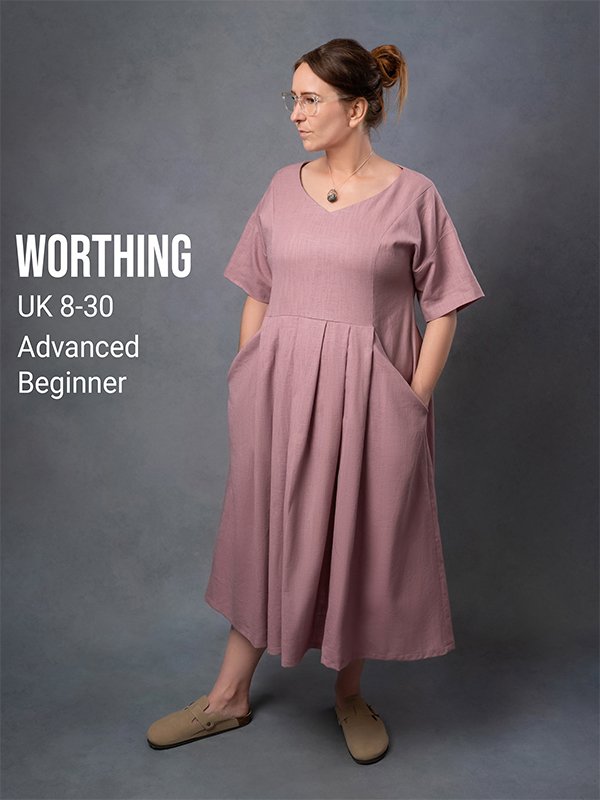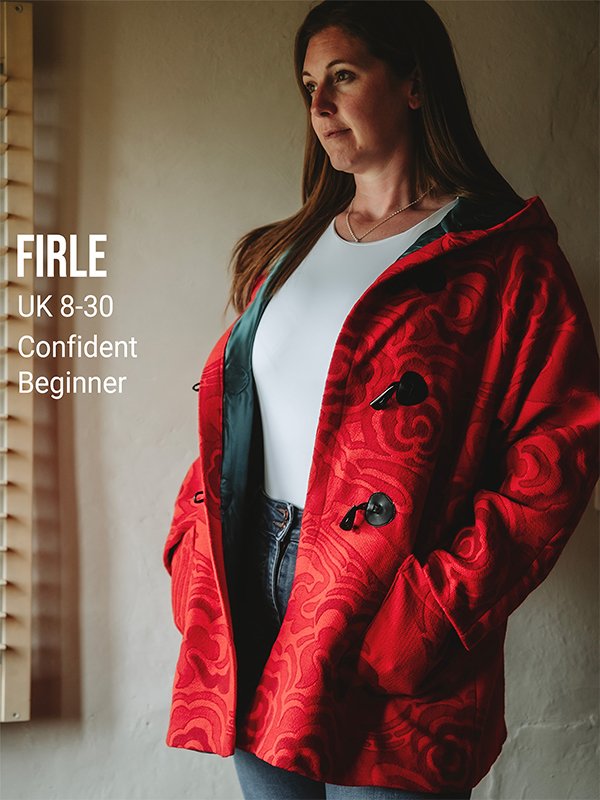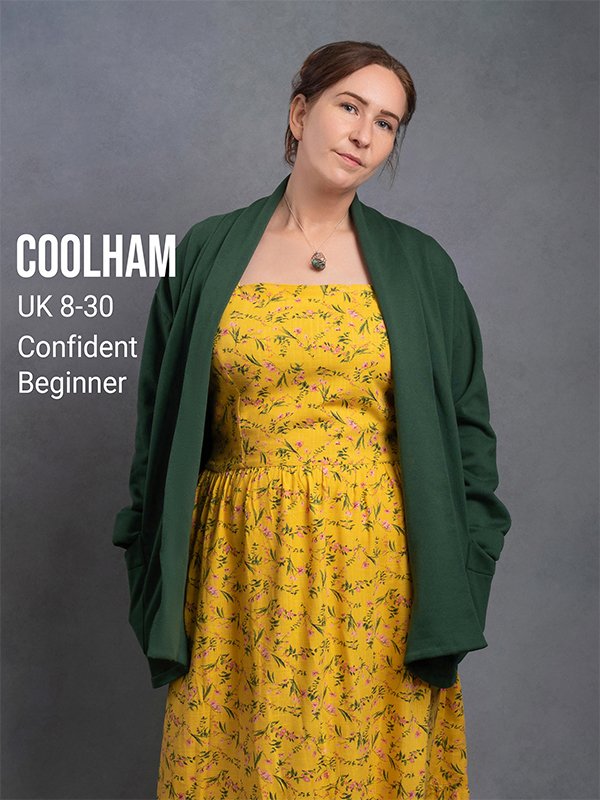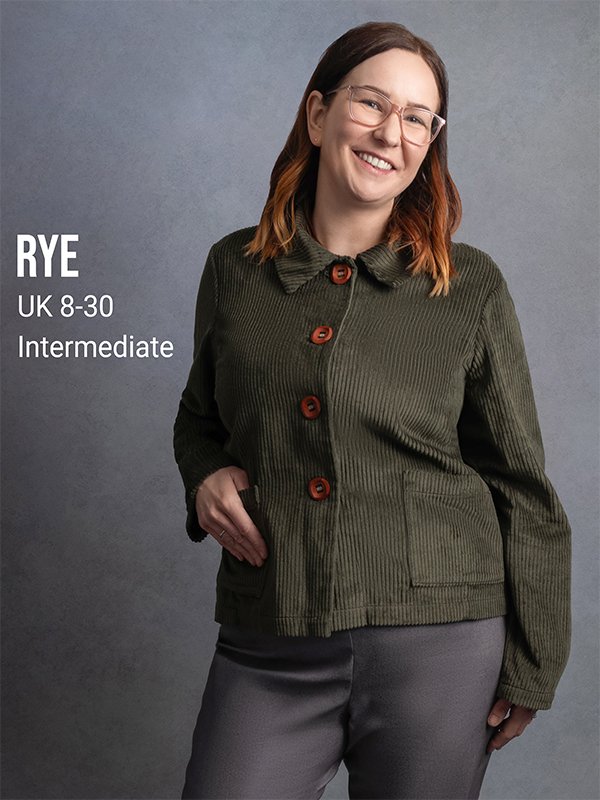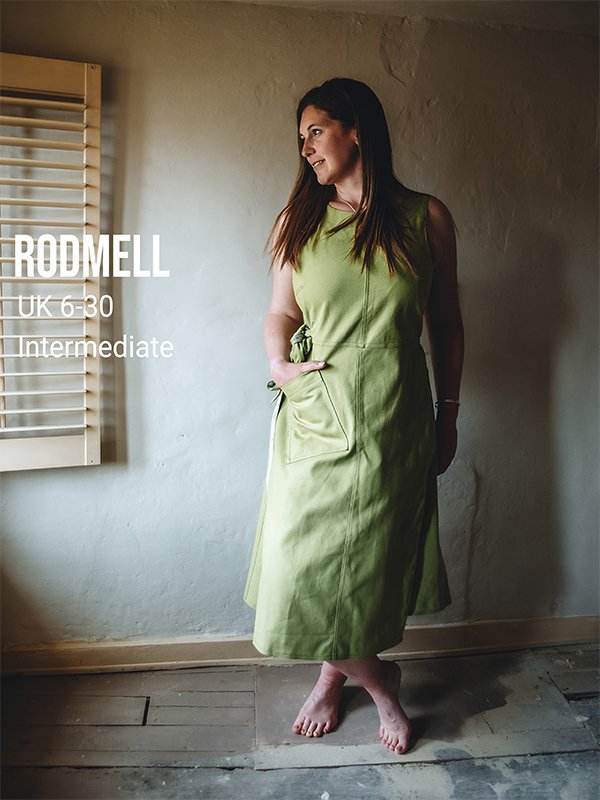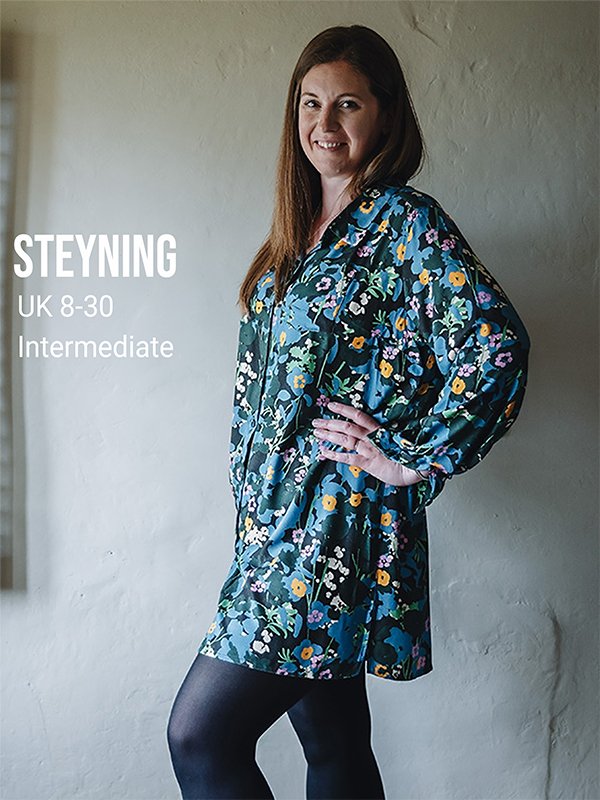How To Sew 6 Types of Pockets - With Video Tutorials
Introduction
There are a multitude of different pocket types that are either included in existing sewing patterns or can be added to patterns that don’t currently have them. This guide includes some of the most common pocket types, including links to video tutorials and downloadable pocket templates.
The easiest types of pockets to add to patterns are patch pockets and in-seam pockets, so we’ll start with those, before moving on to look at more integrated types of pocket.
Here’s the types we’ll cover:
Patch Pockets
Top Stitched Patch Pockets
Pleated Patch Pockets
In-Seam Pockets
Welt Pockets
Built-In Pockets
Patch Pockets
Patch pockets are what they sound like. Simple patches of fabric that can be stitched to any pattern in order to add some practicality or additional interest. They are stitched to the right side of a garment to form an exterior pocket and can be added pretty much anywhere there is space to accommodate them.
An example of some patch pockets.
There are a number of variations you can apply beyond basic size and shape so we’ll look at some those options in a moment, but let’s start with a basic patch pocket.
Many of our sewing patterns include patch pockets. Since they are generally optional features and also very simple, you can often take a pocket pattern piece from one pattern and add it to another, adjusting the width or height of the main body of the pocket as desired.
To see how a patch pocket is constructed click below to view the Patch Pockets section from the Lancing Dress tutorial.
Click image above for the Patch Pockets Section of the Lancing Dress Tutorial
When deciding on pocket placement, consider how easy they will be to access (if they are intended for practical use), and whether your hands will rest comfortably inside them if you want to use them in that way. Generally you’ll want to make sure they are neatly aligned with the hem of your garment to avoid them looking wonky.
As with all patterns it’s best to make a toile first, so you can then wear your test garment and determine the best pocket placement.
There are different schools of thought as to whether you should pattern match patch pockets. It really depends on whether you want the pockets to stand out as a feature or to be less visible and primarily for practicality (more like an in-seam pocket - see below).
If you want to really make them stand out you could consider using a contrasting fabric and a striking shape.
Top Stitched Patch Pockets
A decorative addition to elevate the look of any patch pocket is to add top stitching, either in a matching or contrasting thread. This requires some careful stitching but take your time and the results are worth it for a more professional and sophisticated look.
An example of a top stitched patch pocket.
The Rodmell Pinafore contains large top-stitched patch pockets as a key feature. The front one is placed at an angle rather than aligned with the hem which is another way of turning a simple patch pocket into something more interesting - just make sure it is angled enough that it looks intentional rather than slightly off, which just looks wonky. Click the image below to watch the pocket section of the Rodmell Pinafore tutorial.
Click here for the Top Stitched Patch Pocket section of our Rodmell Pinafore tutorial.
Pleated Patch Pockets
A more advanced style of patch pocket is the pleated patch pocket. This, as it sounds, adds a pleat to the pocket which is both decorative and practical - giving the pocket a bit more capacity as well as visual interest. Usually this kind of pocket also has a pocket flap, as in the example below.
An example of a pleated patch pocket.
The Bramber Trousers are cargo-type pants that include various pocket types, including pleated patch pockets. Click the image below to watch the pleated patch pocket section of the tutorial.
Click here for the Pleated Patch Pocket section of the Bramber Trousers tutorial.
If you’d like to construct a pocket like this from scratch, rather than use one from an existing pattern, we have a seperate blog post about pleated patch pockets which includes details of how to create your own template if you want to add one of these to an existing pattern.
In-Seam Pockets
To add an interior pocket to an existing pattern, the easiest method is to add an in-seam pocket. These interior pockets typically stitch into an existing seam. Since they integrate into an existing seam, they are almost invisible if stitched correctly.
An example of an in-seam pocket. Barely visible unless being used.
They are easy to add, and many of our patterns include them as options. Consider the placement of in-seam pockets carefully as you want them to be comfortable to rest your hands inside. Placing them too high or too low can make your arms sit awkwardly or potentially not reach at all. Again, making a toile will help you determine the best placement.
As an example, click the image below for the in-seam pocket tutorial for the Framfield Dress.
Click here for the In-Seam Pockets section of the Framfield Dress tutorial.
For further information including a free in-seam pocket template, see our other blog post: How to Sew an In-Seam Pocket which takes you through the process step by step.
Welt Pockets
Welt pockets are are smart, internal pockets commonly seen on more tailored coats and jackets as well as skirts and trousers. The Welt refers to a reinforced border to the pocket that is topstitched in place. A true welt pocket is formed but cutting a hole into the main body of the fabric, though some simpler pockets add a welt for decoration and are a kind of faux welt pocket.
We included “proper” welt pockets in the Danehill Coat pattern, which is a semi-tailored and lined coat. We’ve put the welt pocket part of the tutorial in it’s own video, which you can view by clicking on the image below.
Click here for a tutorial on How to Sew Welt Pockets.
Built In Pockets
Now we come to pockets that are an inherent part of a pattern’s design. These built-in pockets come in all shapes and sizes and are integrated into the pattern itself rather than being optional extras.
Built-in pockets are typically more varied and contribute more to a garment’s unique style and construction.
An example of a built-in pocket from the Arundel Skirt (a personal favourite!)
See the tutorial below for an example of a built-in pocket from the Arundel Skirt. You can find many more in our pattern selection, and the Worthing Dress uses them as a striking and practical feature.
Click here for the Built-In Pocket section of the Arundel Skirt Tutorial
Sussex Seamstress is an independent pattern studio, based in Sussex, UK.
Check out our range of dressmaking patterns in sizes 6-30. A Selection of our recent patterns is shown below. Thank you!
